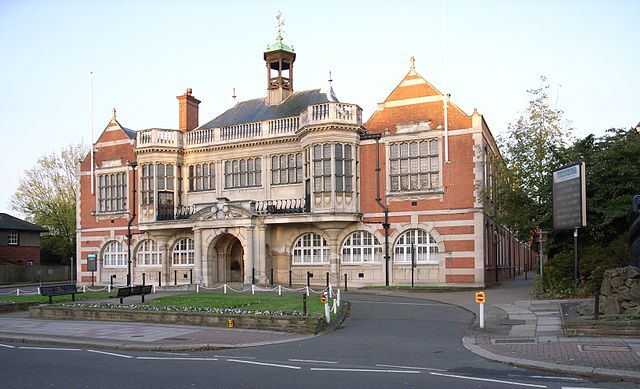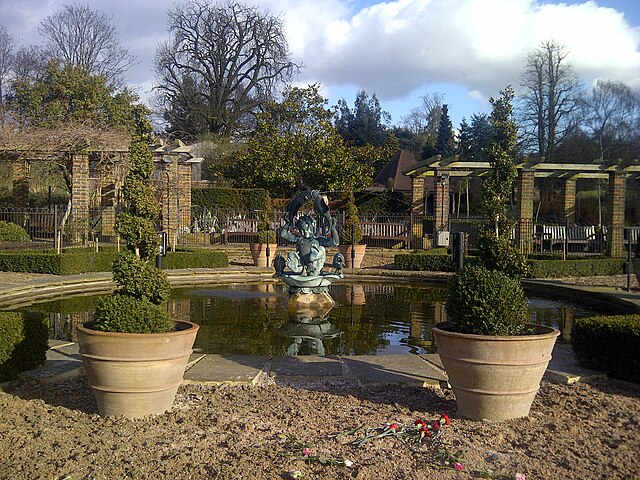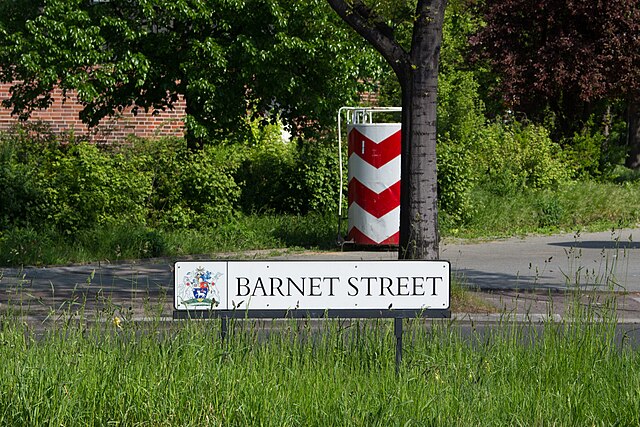Barnet London Borough Council
Barnet London Borough Council, also known as Barnet Council, is the local authority for the London Borough of Barnet in Greater London, England. It is a London borough council, one of 32 in London. The council has been under Labour majority control since 2022. The council meets at Hendon Town Hall and has its main offices at 2 Bristol Avenue in Colindale.
Barnet London Borough Council
2 Bristol Avenue, Colindale: Council's main offices since 2019
Barnet House, 1255 High Road, Whetstone: Council's main offices 1986–2019
The London Borough of Barnet is a local authority area on the northern outskirts of London. The borough was formed in 1965 from parts of the ceremonial counties of Middlesex and Hertfordshire. It is the second largest London borough by population with 389,344 inhabitants as of 2021, also making it the 17th largest district in England. The borough covers an area of 86.74 square kilometres (33 sq mi), the fourth highest of the 32 London boroughs, and has a population density of 45.8 people per hectare, which ranks it 25th.
Hendon Town Hall, still used by Barnet council
Golders Hill Park in Barnet
Street sign "Barnet Street" (Barnetstraße) in the Tempelhof-Schöneberg district of Berlin. The district also has streets called Hendonstraße and Finchleystraße





